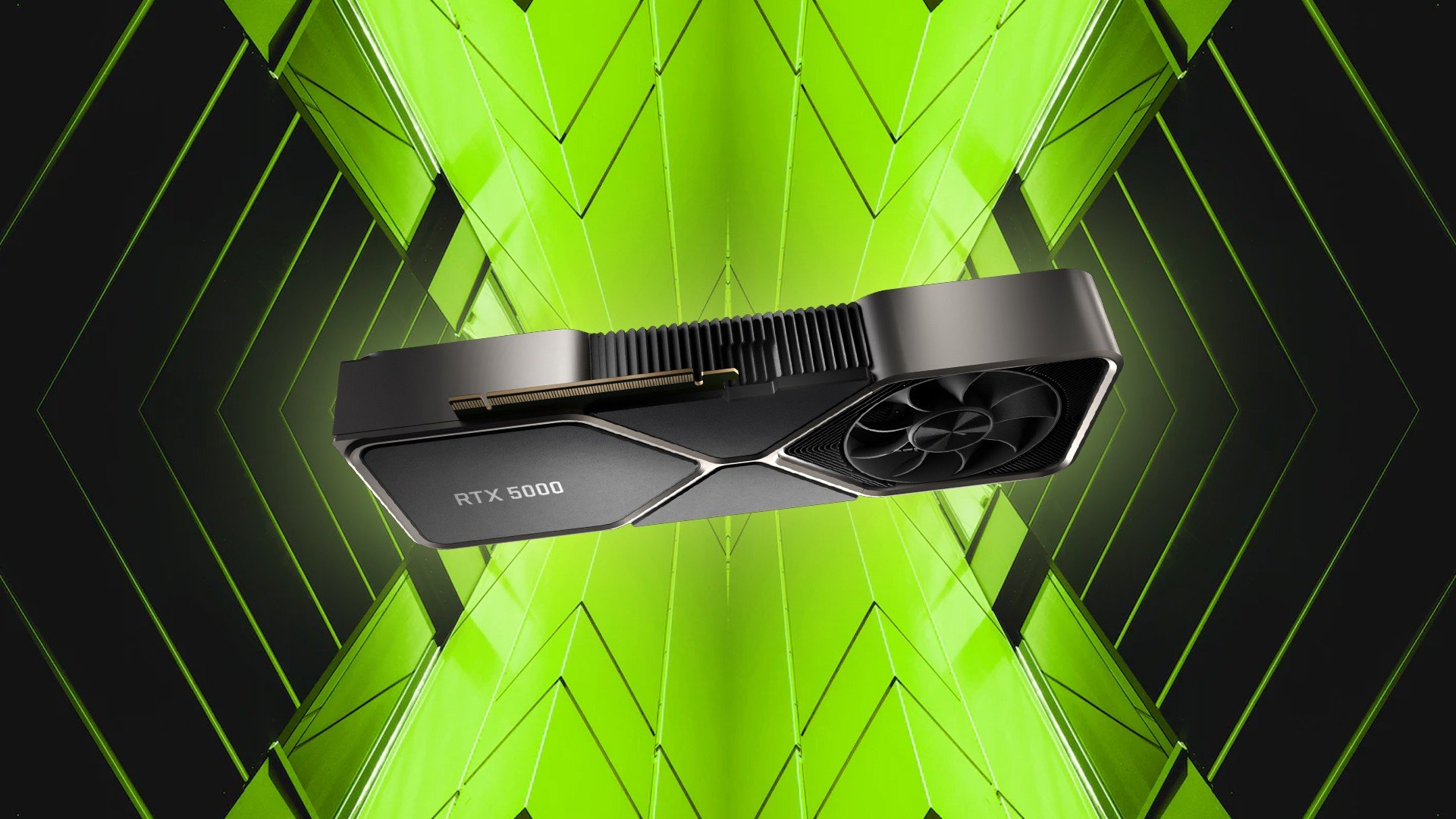


At CES 2025, NVIDIA's CEO announced the company's latest flagship desktop GPU, the GeForce RTX 50-series, which boasts impressive AI modeling capabilities and can dramatically improve gaming performance. Along with the new graphics cards, NVIDIA also unveiled a new supercomputer for AI research, a humanoid robot learning modality, a world foundation model platform, and a partnership with Toyota for autonomous vehicles. The RTX 50-series will be available in various laptops from popular brands starting in March and April.
NVIDIA's CES 2025 Unveiling: A Glimpse into the Future of Technology
At the forefront of the consumer electronics industry, NVIDIA's CES 2025 keynote presentation showcased a groundbreaking array of technological advancements that promise to reshape our world.
NVIDIA GeForce RTX 50-Series Graphics Cards: Unleashing AI and Gaming Power
The highlight of NVIDIA's announcements was the unveiling of the GeForce RTX 50-series graphics cards, a new generation of GPUs designed to empower gamers and content creators alike. Leveraging the latest AI advancements, these cards offer unprecedented modeling capabilities, dramatically enhancing image quality and performance in gaming.
AI Research Supercomputer: Pushing the Boundaries of Machine Learning
NVIDIA also unveiled a new supercomputer dedicated to AI research. This cutting-edge system will accelerate the development of autonomous vehicles, medical diagnostics, and advanced scientific discoveries.
Humanoid Robot Learning Modality: Advancing Robotics
The company unveiled a revolutionary humanoid robot learning modality that enables robots to learn complex tasks through imitation and reinforcement. This breakthrough has the potential to transform industries such as healthcare, manufacturing, and entertainment.
World Foundation Model Platform: Unifying AI Knowledge
NVIDIA introduced a world foundation model platform, providing a shared base of knowledge for researchers and engineers. This platform aims to accelerate the development of AI models and applications across domains.
Partnership with Toyota for Autonomous Vehicles: Shaping the Future of Transportation
In collaboration with Toyota, NVIDIA showcased a strategic partnership focused on the advancement of autonomous vehicle technology. Together, they will leverage NVIDIA's advanced computing platforms and Toyota's automotive expertise to accelerate the development of safer and more efficient self-driving cars.
Laptops with GeForce RTX 50-Series GPUs: Availability and Pricing
Laptops featuring NVIDIA GeForce RTX 50-series graphics cards will be available in March and April from a variety of popular brands. Pricing will vary depending on the specific laptop model and configuration.
Top 5 FAQs and Answers
1. What is the key feature of the GeForce RTX 50-series graphics cards? A: Enhanced AI modeling capabilities that significantly improve image quality and performance in gaming and content creation.
2. What are the benefits of NVIDIA's AI research supercomputer? A: Accelerated development of autonomous vehicle technology, medical diagnostics, and scientific discoveries.
3. How does the humanoid robot learning modality advance robotics? A: It enables robots to learn complex tasks through imitation and reinforcement, expanding their potential in various industries.
4. What is the purpose of the world foundation model platform? A: To provide a shared base of knowledge for researchers and engineers, facilitating the development of AI models and applications across domains.
5. When will laptops with GeForce RTX 50-series graphics cards be available? A: March and April.

The popular first-person shooter, Black Ops 6, has a new glitch that allows players to be invulnerable and farm XP in the difficult Zombies mode on Terminus Island. This glitch is especially useful for unlocking unique camos faster. Players can follow simple steps to use the glitch, but it may take a few attempts to work. The glitch can be deactivated at any time by using the zipline near the docks.

Add some warmth and ambiance to your outdoor area with the Govee Outdoor Clear Bulb String Lights. These weather-resistant lights are perfect for any occasion, with customizable brightness and colors that can be easily controlled through the Govee app. And at a discounted price of $70, you can't go wrong with adding these lights to your outdoor decor.

Tecno has released a new addition to their Spark series in India, the Spark Go 5G, which boasts a 6000mAh battery and a unique camera setup. At a price of under Rs 10,000, it is claimed to be the thinnest in its price segment. Available in four colors and a single storage variant, the phone will be available for purchase from various online and offline stores starting July 21.

On Friday morning, the online ticket booking portal of Indian Railway Catering and Tourism Corporation (IRCTC) crashed, leaving thousands of users unable to complete their bookings for the upcoming Diwali and Chhath Puja holidays. The outage, believed to be caused by an overwhelming number of Tatkal booking requests, spiked sharply around 10 am and continued for several hours. Frustrated users flooded social media with complaints and memes, urging the IRCTC to improve its technology to handle peak traffic during festive seasons.

After years of offering free storage for its popular Memories feature, Snapchat has announced that users will now have to pay for storage if they exceed the 5GB limit. This has caused backlash and frustration among loyal Snapchatters, who feel that they are being taken advantage of and that the sudden change is unfair. Experts believe that this move signals a trend of social media platforms charging for storage as users accumulate more content over time.

A recent YouTube video has given a sneak peek into Samsung's upcoming Galaxy S26 Ultra and its possible specifications. The phone is expected to feature Qualcomm's new Snapdragon 8 Elite Gen 5 chip, making it highly capable for heavy app usage, multitasking, and gaming. Along with improved display and privacy features in One UI 8.5, the phone is rumored to come with a quad-camera setup and a larger battery with faster charging capabilities. Samsung fans may have a lot to look forward to if these leaks turn out to be true.

As anticipation for Samsung's upcoming flagship phone lineup-the Galaxy S26 Ultra builds, rumors and leaks about its features and design have started circulating. With the reported return of the Plus model, the lineup is expected to consist of four models, with the Ultra being the most buzzed-about one. The Ultra may see upgrades in its battery capacity, fast charging capabilities, and processor, while also possibly featuring a new pill-shaped camera island. However, these details are not officially confirmed, and the device is expected to debut in January 2026, according to reports.

YouTube, the Google-owned video streaming platform, suffered a significant global outage, leaving millions of affected users unable to access content for over an hour. The disruption affected not only the main platform, but also related services like YouTube Music and YouTube TV. As users took to social media to confirm the disruption, some pointed out the irony of still receiving ads while videos were not playing. A spokesperson for YouTube reassured users and acknowledged the issue, promising updates as it was being resolved.

Google is getting ready to make a major impact on the creative landscape with the release of VEO 3.1. It has been widely speculated that this update will bring longer clips and improved audio-visual quality for creators through the Gemini app and Vertex AI. Evidence of the release is mounting, with a disclaimer appearing in Gemini and mentions of VEO 3.0 preview models on Vertex AI. Google's staged rollout strategy indicates that they are looking to gather feedback and maximize adoption, solidifying their position in the world of generative media. Keep an eye out for more updates as the release date approaches.

Subscribers of Jio Hotstar were left frustrated and disappointed when they were unable to access the popular app due to a sudden technical glitch. The platform, known for its live events and ongoing shows, acknowledged the issue and apologized for the inconvenience caused to its users. Despite receiving numerous complaints on X and other social networks, Jio Hotstar's technical team has confirmed that the problem has been fixed. The platform has also reminded users to refrain from making offensive comments, stating that such behavior is punishable by law.